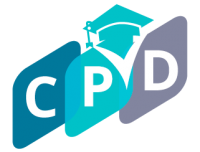Introduction:
Education is a journey marked by various challenges, and students may encounter learning gaps that hinder their academic progress. Recognizing the importance of addressing these gaps, tuition centers play a pivotal role in providing targeted support to students facing difficulties. In this article, we will explore how tuition centers identify, address, and bridge learning gaps, ensuring that every student receives the necessary assistance for a successful educational journey.
- Diagnostic Assessments: Tuition centers begin the process of addressing learning gaps by conducting diagnostic assessments. These assessments help tutors identify specific areas where a student may be struggling. Whether it’s a foundational concept, a particular skill set, or a subject-specific challenge, diagnostic assessments provide valuable insights that inform the creation of a customized learning plan.
- Individualized Learning Plans: Once learning gaps are identified, tuition centers develop individualized learning plans tailored to the unique needs of each student. These plans are designed to address specific challenges and build a solid foundation in areas where the student requires additional support. Tutors work closely with students to ensure that the learning plan aligns with their pace, learning style, and academic goals.
- Targeted Remedial Instruction: Tuition centers provide targeted remedial instruction to fill the learning gaps identified through assessments. Tutors employ various teaching strategies, resources, and materials to reteach concepts, clarify doubts, and reinforce essential skills. This targeted approach ensures that students not only catch up on missed content but also gain a comprehensive understanding of the subject matter.
- Small Group and One-on-One Sessions: Recognizing that different students have varying needs, tuition centers offer both small group and one-on-one sessions. Small group sessions foster collaborative learning, allowing students to benefit from peer interaction and collective problem-solving. On the other hand, one-on-one sessions provide individualized attention, addressing specific challenges with a more personalized approach.
- Continuous Monitoring and Progress Tracking: Tuition centers adopt a proactive approach to addressing learning gaps by continuously monitoring student progress. Regular assessments and progress tracking mechanisms allow tutors to gauge the effectiveness of remedial strategies and make adjustments as needed. This iterative process ensures that learning gaps are not only identified but actively addressed throughout the student’s educational journey.
- Utilization of Technology: Technology plays a crucial role in addressing learning gaps in tuition centers. Educational apps, online resources, and interactive platforms can be customized to cater to individual needs. Tutors leverage technology to provide additional practice exercises, interactive simulations, and engaging multimedia content that reinforces learning and addresses specific challenges.
- Building a Strong Foundation: Addressing learning gaps is not just about catching up; it’s also about building a strong foundation for future learning. Tuition centers focus on ensuring that students not only bridge current gaps but also develop the necessary skills and understanding to approach more advanced topics with confidence. This approach contributes to long-term academic success.
- Collaboration with Classroom Learning: Tuition centers work collaboratively with classroom learning to address learning gaps comprehensively. Tutors are often in communication with classroom teachers, sharing insights about a student’s progress, challenges, and areas of improvement. This collaborative approach ensures that the support provided by tuition centers is aligned with and complements the student’s overall educational experience.
- Cultivating a Positive Learning Environment: Addressing learning gaps goes beyond academics; it involves creating a positive and supportive learning environment. Tuition centers prioritize cultivating an atmosphere where students feel comfortable asking questions, seeking clarification, and expressing their concerns. A positive learning environment contributes to the emotional well-being of students, fostering a mindset conducive to overcoming challenges.
- Empowering Students with Learning Strategies: Tuition centers not only address immediate learning gaps but also empower students with effective learning strategies. Tutors guide students in developing study skills, time management techniques, and critical thinking approaches that extend beyond specific subjects. These strategies equip students with the tools they need to navigate future challenges independently.
Conclusion:
Addressing learning gaps is a fundamental aspect of the support provided by tuition centers. Through diagnostic assessments, individualized learning plans, targeted remedial instruction, small group and one-on-one sessions, continuous monitoring, the utilization of technology, building a strong foundation, collaboration with classroom learning, cultivating a positive learning environment, and empowering students with learning strategies, tuition centers play a transformative role in helping students overcome difficulties and succeed academically. By addressing learning gaps proactively and comprehensively, tuition centers contribute to the development of confident, resilient, and successful learners who are well-prepared for the challenges of their educational journey and beyond.
